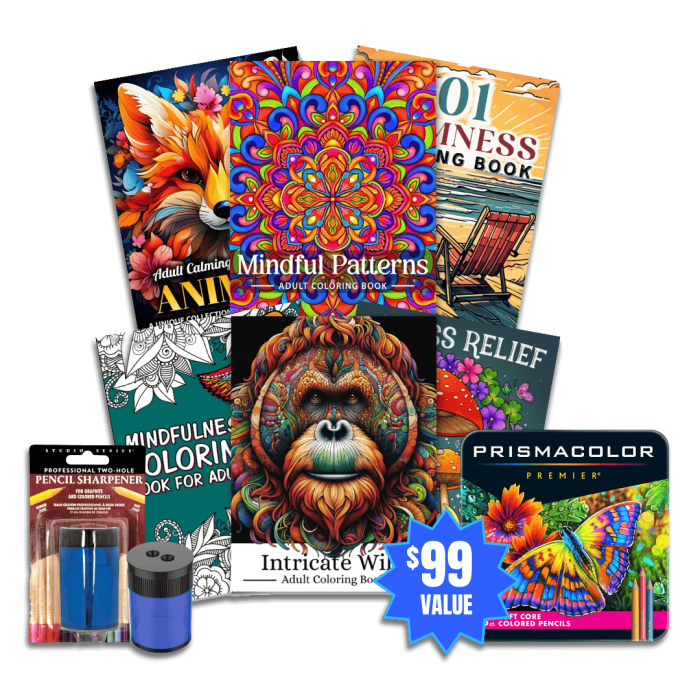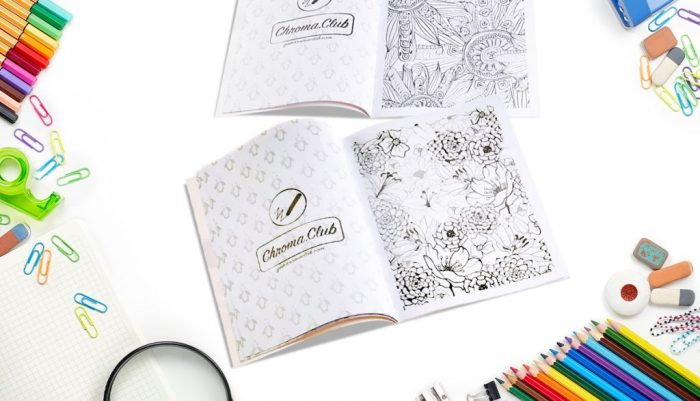Online Marketplaces: Best Place To Sell Coloring Books

Best place to sell coloring books – Choosing the right online marketplace is crucial for successfully selling your coloring books. Each platform offers a unique blend of fees, reach, and ease of use, catering to different business models and target audiences. Understanding these nuances is key to maximizing your sales potential. Let’s delve into a comparison of three popular options: Etsy, Amazon Handmade, and Shopify.
Comparison of Online Marketplaces for Coloring Book Sales
The following table summarizes the key differences between Etsy, Amazon Handmade, and Shopify regarding fees, reach, and ease of use. Remember that these are general observations, and specific costs can vary based on your individual sales volume and chosen plan.
| Platform | Fees | Reach | Ease of Use |
|---|---|---|---|
| Etsy | Listing fees (per listing), transaction fees (percentage of sale price), payment processing fees. Generally, higher fees than Amazon Handmade, but lower than Shopify if you factor in app costs and monthly fees. | Strong reach to a niche audience of crafters, artists, and individuals interested in handmade and unique items. Excellent for building a brand and fostering a community. | Relatively easy to use with a user-friendly interface. Suitable for beginners with minimal technical expertise. However, marketing on Etsy requires dedicated effort. |
| Amazon Handmade | Lower listing fees and transaction fees compared to Etsy. Benefits from Amazon’s massive customer base. | Access to Amazon’s vast customer base, but potentially less targeted than Etsy. Competition can be fierce. | Simple to set up, leveraging Amazon’s established infrastructure. However, Amazon’s control over branding and marketing can be restrictive. |
| Shopify | Monthly subscription fees, transaction fees (if using Shopify Payments), app fees (for added functionalities). Offers greater flexibility but requires a higher upfront investment. | Complete control over branding and marketing. Potential to reach a wider audience through targeted advertising and , but requires more marketing effort and expertise. | More technically complex than Etsy or Amazon Handmade, requiring a basic understanding of e-commerce platforms. Offers maximum flexibility and customization. |
Advantages and Disadvantages of Each Platform for Different Demographics
Each platform attracts a different customer demographic, influencing the advantages and disadvantages for selling coloring books. Etsy’s community-driven nature attracts buyers seeking unique, handcrafted items, ideal for artists with established brands or those selling limited-edition designs. Amazon Handmade offers access to a broad audience, beneficial for reaching a wider range of buyers, including those unfamiliar with Etsy. However, competition is intense.
Shopify provides complete control, empowering sellers to target specific demographics through personalized marketing, crucial for building a sustainable brand.
Marketing Strategy for Coloring Books on Etsy
Etsy’s strength lies in its curated community of crafters and art enthusiasts. A successful Etsy marketing strategy for coloring books would leverage this:High-quality product photography showcasing the unique designs and quality of the paper is essential. Compelling product descriptions highlighting the intricate details, themes, and intended audience are also critical. Active engagement with Etsy’s community features, including participation in relevant teams and responding promptly to customer inquiries, helps build trust and brand loyalty.
Utilizing Etsy’s advertising features to target specific demographics interested in coloring books and related crafts can significantly boost visibility. Running occasional sales and promotions to incentivize purchases further enhances sales potential. Finally, consistently updating the shop with new designs and actively seeking customer feedback fosters ongoing engagement and brand loyalty. This multi-faceted approach maximizes Etsy’s potential for selling coloring books.
Print-on-Demand Services

Print-on-demand (POD) services offer a compelling avenue for selling coloring books, eliminating the upfront costs and risks associated with traditional publishing. Platforms like Printful and Redbubble handle the printing, packaging, and shipping, allowing you to focus on design and marketing. However, understanding the nuances of each platform and the inherent advantages and disadvantages is crucial for success.Print-on-demand streamlines the process significantly, removing the complexities of inventory management and warehousing.
This makes it an ideal solution for independent artists and authors looking to test the market or manage a smaller-scale operation. Yet, profit margins can be impacted by the POD service’s fees and the inherent variability in production costs. Careful consideration of these factors is vital for long-term profitability.
Printful and Redbubble: Advantages and Disadvantages
A comparative analysis of Printful and Redbubble highlights their distinct strengths and weaknesses for coloring book sales. Choosing the right platform depends heavily on your individual goals and priorities, ranging from design control to marketing support.
Printful:
- Advantages: Greater control over branding and customization; wider range of product options beyond just coloring books (allowing for cross-promotion); integration with various e-commerce platforms (Shopify, Etsy); potential for higher profit margins with strategic pricing.
- Disadvantages: Requires more hands-on management of your online store; marketing efforts are primarily your responsibility; potentially higher initial setup costs.
Redbubble:
- Advantages: Built-in marketplace with a large existing customer base; handles marketing and customer service; easier setup process; minimal upfront investment.
- Disadvantages: Less control over branding and pricing; lower profit margins due to Redbubble’s commission structure; less design flexibility; potential for higher competition.
Setting Up a Print-on-Demand Store for Coloring Books
Establishing a successful print-on-demand store for coloring books requires careful attention to design specifications and a well-defined marketing strategy. The quality of your designs directly impacts sales, while effective marketing ensures your books reach the right audience.
Design Specifications:
High-resolution artwork is paramount. Coloring books require detailed, intricate designs that translate well to print. Consider using a 300 DPI resolution for optimal quality. File formats like PDF or JPG are commonly accepted. Pay close attention to bleed areas and margins to avoid design issues during printing.
For example, ensure your design extends slightly beyond the trim line to prevent white borders. Consider different book sizes and page counts to cater to diverse customer preferences. For example, a smaller, pocket-sized book might be appealing to those who prefer on-the-go coloring, whereas a larger format might be preferred for more complex designs.
Marketing Considerations:
Effective marketing is crucial for visibility. Utilize social media platforms like Instagram and Pinterest to showcase your designs. Engage with potential customers through contests and collaborations. Consider targeted advertising campaigns on social media and search engines. Build an email list to nurture leads and announce new releases.
Collaborate with other artists or influencers to cross-promote your work. Optimize your product listings with relevant s for better search engine rankings. For instance, if your coloring book is themed around fantasy creatures, use s like “fantasy coloring book,” “mythical creatures coloring book,” “adult coloring book fantasy,” etc.
Examples of Successful Coloring Book Designs
Analyzing successful coloring book designs reveals common design elements and marketing strategies. Many popular designs feature intricate patterns, captivating themes, and high-quality artwork.
Consider a coloring book featuring intricate mandalas. The success of this design stems from the inherent appeal of mandalas for relaxation and mindfulness, coupled with high-quality, detailed artwork. Marketing might focus on the therapeutic benefits of coloring, targeting a relaxation-focused audience. Another example might be a coloring book based on popular fantasy characters. The popularity of the characters provides inherent brand recognition, drawing in a pre-existing fan base.
The marketing would likely leverage the popularity of the characters, targeting fans through social media engagement and collaborations with relevant fan communities. Finally, a coloring book focusing on nature scenes, perhaps with realistic botanical illustrations, might appeal to a nature-loving audience. Marketing would focus on the beauty and detail of the illustrations, highlighting their appeal to those who appreciate nature’s artistry.
Direct Sales and Local Markets

Direct sales offer a unique opportunity to connect with your audience on a personal level, building brand loyalty and receiving immediate feedback. This approach allows for a more intimate understanding of customer preferences, which can inform future designs and marketing strategies. By engaging directly with potential buyers, you gain valuable insights into what resonates with them, far beyond the data provided by online platforms.Local markets provide a tangible connection to your community, transforming your coloring books from mere products into pieces of art with a story.
The tactile experience of browsing through your collection, coupled with the opportunity for personalized interaction, elevates the overall buying experience. This direct engagement can lead to higher conversion rates and foster a sense of community around your work.
Potential Local Markets for Coloring Book Sales, Best place to sell coloring books
Three highly effective local markets for selling coloring books directly to consumers are craft fairs, bookstores, and libraries. Craft fairs offer a vibrant, bustling environment perfect for showcasing your artwork and engaging with potential buyers face-to-face. Bookstores, with their established clientele of readers and art enthusiasts, provide a targeted audience receptive to new creative offerings. Libraries, while perhaps less focused on sales, can still offer valuable exposure through displays and workshops, potentially leading to increased brand awareness and sales.
Participating in a Local Craft Fair: A Step-by-Step Plan
Successful participation in a craft fair requires meticulous planning and execution. First, secure a booth space well in advance, researching fairs that align with your target demographic. Next, design an eye-catching booth display. Imagine a charming setup featuring a vibrant tablecloth, perhaps with a color palette that reflects your coloring book themes. Neatly organized stacks of your books, alongside perhaps a small display of example pages showcasing intricate designs, will create an appealing visual.
Pricing should be competitive yet reflect the value and quality of your work; consider offering discounts for bulk purchases. Finally, engage customers with a friendly, enthusiastic demeanor. Offer a brief, compelling description of your work, highlighting unique selling points, and encourage customers to browse and interact with your books.
Compelling Sales Pitch for Direct Sales
My coloring books aren’t just pages to fill; they’re journeys of creativity. Each intricate design is meticulously crafted to offer a relaxing and rewarding experience, a mindful escape from the everyday. Unlike mass-produced coloring books, mine offer unique, artistic styles you won’t find anywhere else – imagine a whimsical forest scene teeming with fantastical creatures, or a vibrant underwater world bursting with color.
They’re perfect for stress relief, creative expression, and a thoughtful gift for any age. Pick one up and let your imagination run wild!
Answers to Common Questions
What are the legal considerations for selling coloring books online?
Ensure you understand copyright laws regarding any images or designs used in your coloring books. If using copyrighted material, secure appropriate licenses. Also, comply with relevant tax regulations and consumer protection laws in your sales region.
How do I handle returns and refunds for coloring books?
Establish a clear return policy outlining the conditions under which returns are accepted (e.g., damaged goods). Process refunds promptly and professionally to maintain customer satisfaction and a positive online reputation. Platform-specific return policies should also be adhered to.
How can I protect my coloring book designs from being copied?
Register your designs with a copyright office. Use watermarks on digital copies of your designs. Monitor online marketplaces for potential infringements. While complete protection is challenging, these steps deter unauthorized copying.
